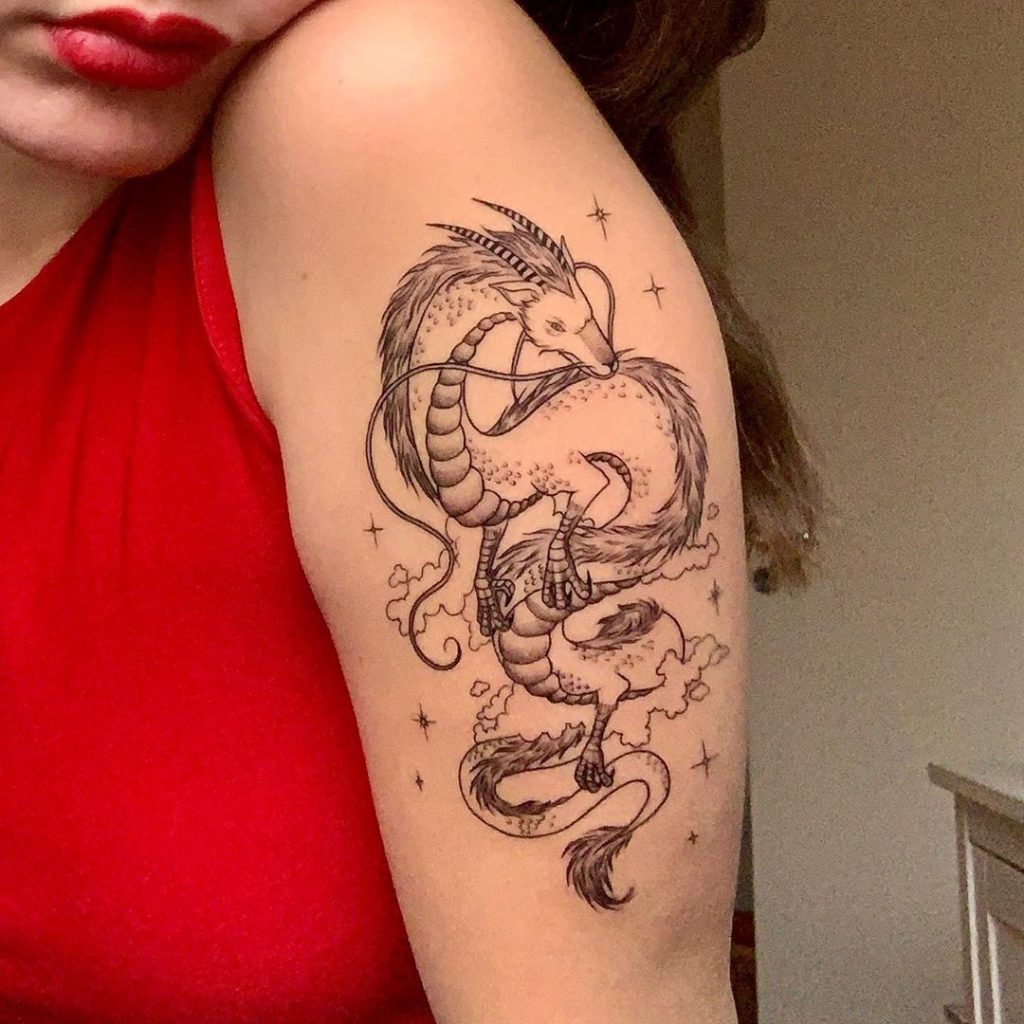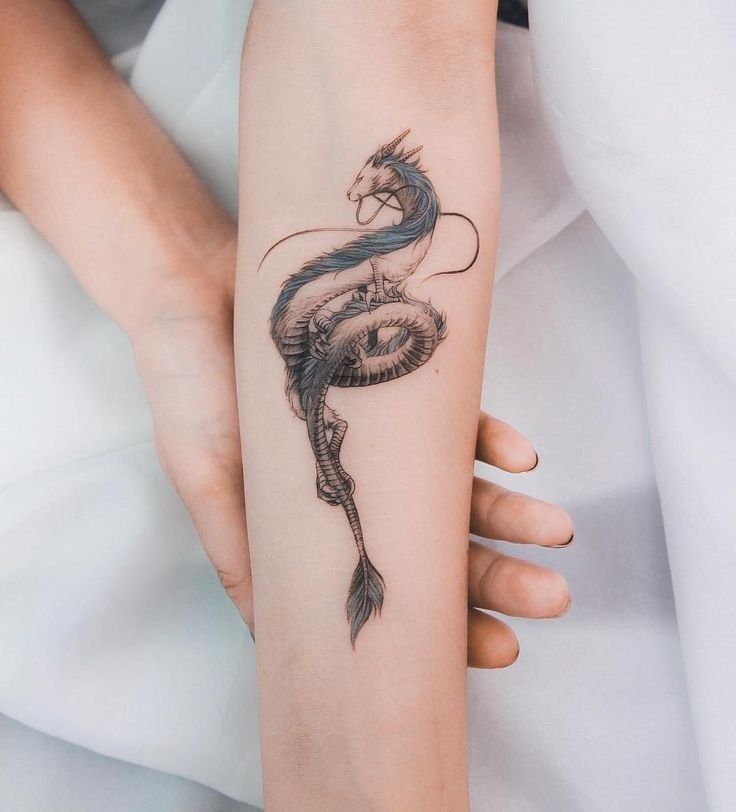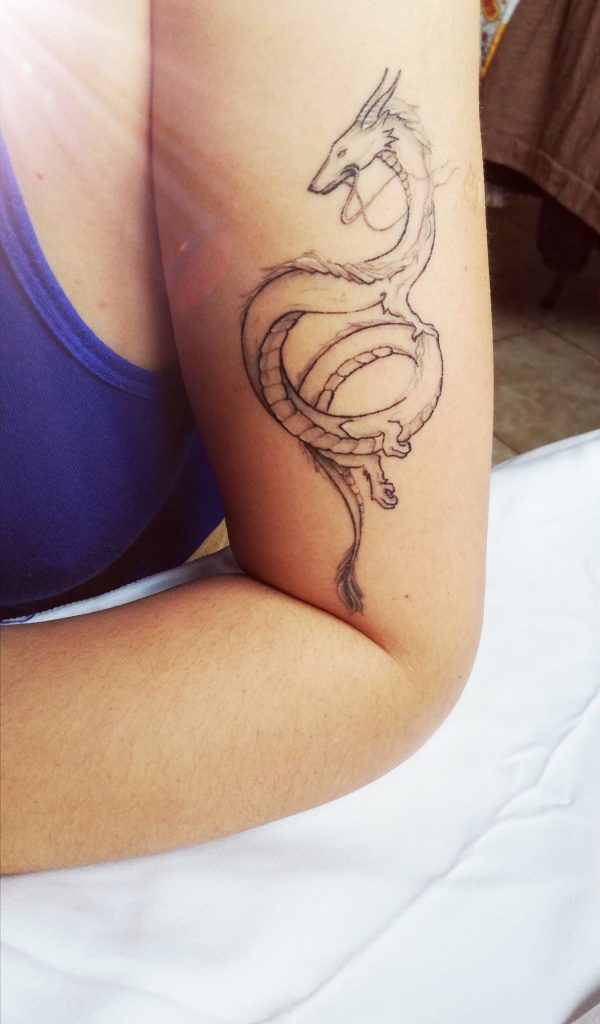
The artistry involved in creating a Haku tattoo is as captivating as the character himself. Haku, the dragon spirit from Studio Ghibli’s “Spirited Away,” offers a rich tapestry of visual and symbolic elements that tattoo artists can explore. From his intricate dragon form to his calm human visage, Haku’s representation requires a blend of skill, creativity, and a deep understanding of the character’s essence.
Haku Tattoos Design

When designing a Haku tattoos, artists often begin with Haku’s dragon form. This design is characterized by flowing lines and intricate details that capture the dragon’s sinuous body and ethereal nature. The scales, mane, and horns of the dragon need to be meticulously crafted to convey a sense of movement and grace. This requires a tattoo artist with a keen eye for detail and an ability to create dynamic compositions.
Read more: What is an Ephemeral Tattoo?
The use of color is another important aspect of Haku tattoos. In his dragon form, Haku is typically depicted in shades of white, blue, and green, which symbolize purity, calmness, and life. These colors can be used to create a visually striking tattoo that stands out while also maintaining a sense of harmony and balance. Some may choose to add elements of gold or silver to highlight specific details and enhance the overall aesthetic.

For those who prefer Haku in his human form, the focus shifts to capturing his serene expression and the subtle details of his traditional Japanese attire. This version of Haku often requires a more delicate touch, with emphasis on facial features and clothing patterns. Including additional elements like the bathhouse or other characters from “Spirited Away” can add depth and context to the tattoo, making it a more comprehensive tribute to the film.

In conclusion, the artistry of Haku tattoos lies in the ability to capture the character’s essence through detailed and dynamic designs. Whether in dragon or human form, a Haku tattoo is a testament to the skill and creativity of the tattoo artist, as well as a beautiful homage to one of Studio Ghibli’s most beloved characters.